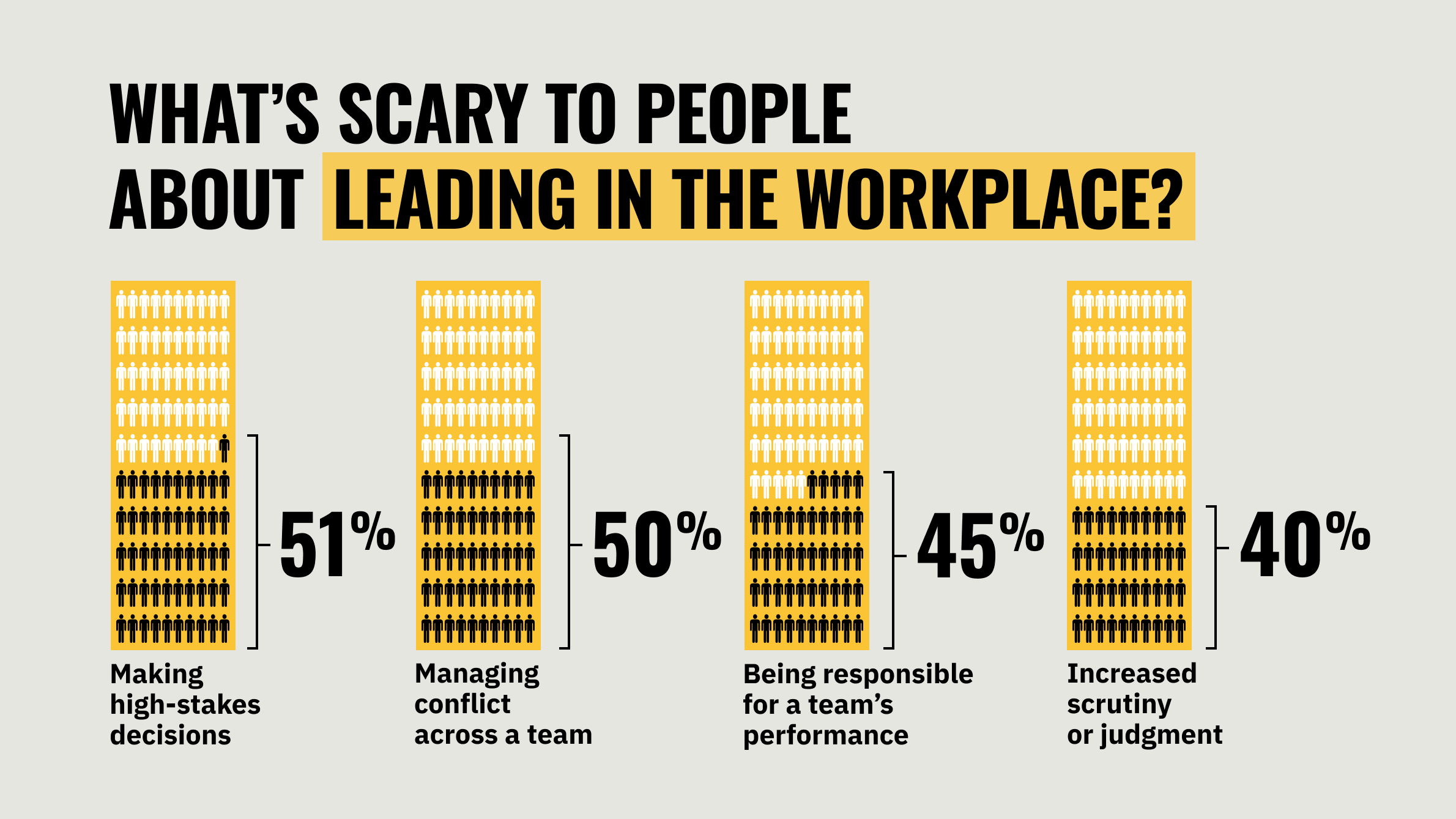The leadership scaries — what’s holding back your leadership pool may surprise you

Learning and development leaders seeking to build a robust leadership pipeline face a two-fold challenge. Not only must they identify and cultivate employees with leadership potential, but they must also understand what attracts or discourages budding leaders from these roles. While higher pay and other perks can serve as incentives, employees increasingly factor in the perceived risks that a leap to leadership might entail.
For L&D leaders, insight and information into these perceived risks will be critical to anticipating and alleviating barriers on the leadership path.
What employees think
In a survey, Big Think+ asked 296 full-time U.S. employees what they find scary or intimidating about becoming a workplace leader. The scariest challenges were:
- Making high-stakes decisions that affect the entire team (51%).
- Managing conflict across a team (50%).
- Being responsible for a team’s performance (45%).
- Increased scrutiny or judgment (40%).
Unsurprisingly, being responsible for others proved a daunting prospect for many budding leaders. It’s also not unusual for people to feel apprehensive regarding conflict and increased scrutiny.
What is surprising, then, is how many organizations construct leadership pipelines as though the capabilities necessary to manage these challenges are bestowed automatically along with the new title. It takes dedicated study and on-the-job training to develop such skills and the confidence to wield them effectively.
As such, astute organizations understand that building capabilities begins early and continues throughout a leader’s tenure.
Possible solutions
- Establish a leadership framework
The expectations an organization has of its leaders shouldn’t be left to chance. When in doubt, today’s emerging leaders are more likely to consult an AI or social media for guidance than take the time to seek their manager. However, such sources can only dole out general advice. They can’t contextualize the leadership expectations unique to your organization.
A carefully designed and communicated leadership framework not only lays out what is expected of leaders, but also clarifies what leadership practices should look like within your unique culture and organizational structure.
2. Create leadership programs for interested and ambitious employees
Leadership roles become less intimidating when employees understand what is expected and, more importantly, have opportunities to develop critical skills. An emerging leaders program provides structure and targeted development for high-potential employees. It also reinforces your organization’s commitment to leadership development.
3. Create always-on opportunities for employees to build their human-centered skills
Human-centered skills contribute to effective leadership and should be fostered throughout a person’s tenure. Opportunities to do so may include peer mentoring, supported decision-making, relevant on-demand learning, occasions to present ideas to management, and team projects that require collaboration and conflict resolution.
Even should a person choose not to move into a leadership role, the skills these opportunities nurture can help build the confidence necessary to take on higher-level responsibilities.
4. Identify great leaders who can mentor others
An engaged and effective mentor is invaluable for leaders at every level. To help foster those relationships, some organizations opt for structured mentoring programs designed to connect employees with potential mentors. Others rely on a more informal approach. In either case, the most essential element is empowering a cadre of experienced leaders who possess both the attributes and enthusiasm that embody effective mentors.
Final thoughts
One of the foremost priorities for any organization should be identifying and fostering leadership talent. By seeking to better understand how employees perceive the risks and rewards of leadership, L&D can help build confidence and empowerment around the things that scare people most.
A closer at Big Think+ content
Looking to dive a bit deeper into Big Think+? Good news! We have a collection of free Big Think+ sample lessons available — right here, right now. And to discover how our expert-led microlearning can help your organization, request a demo today.




